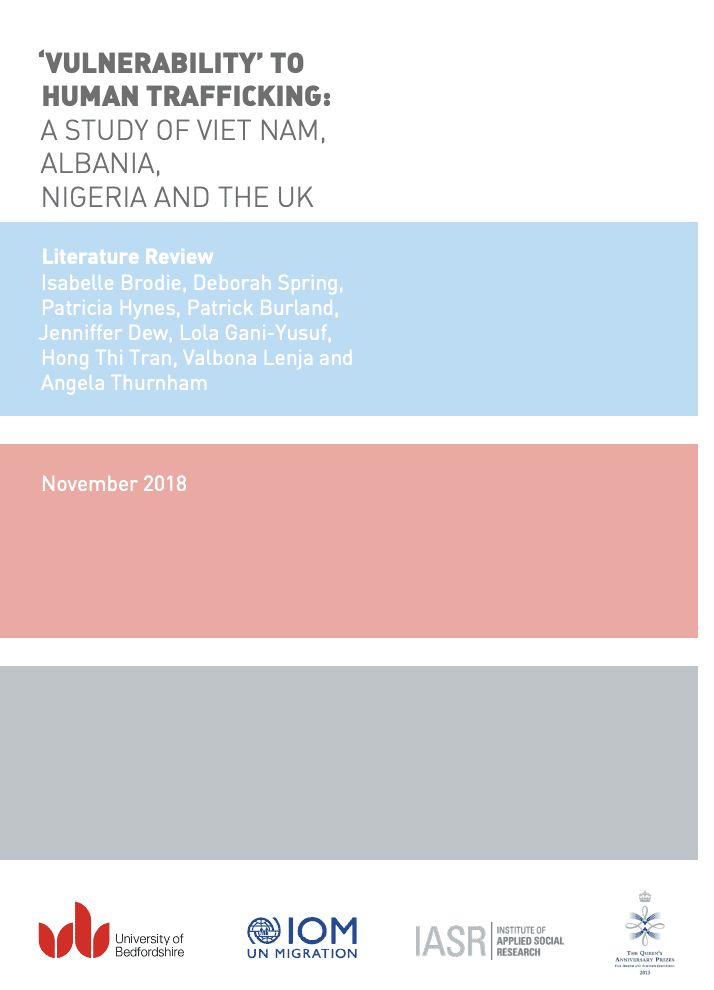
‘Vulnerability’ to Human Trafficking: A Study of Viet Nam, Albania, Nigeria, and the UK
This literature review was undertaken between October 2017 and March 2018 as part of a broader study of vulnerability to human trafficking in Albania, Viet Nam, Nigeria and the UK.
The review aims to explore the social, historical, economic and political contexts that create the environment in which ‘vulnerability’ to and capacities that protect against human trafficking and modern slavery in Albania, Viet Nam, Nigeria and the UK.
This is a scoping review that has been undertaken in line with Department of International Development guidelines on critical appraisal and evidence assessment.
The nature of the evidence base relating to human trafficking and human slavery means that the review has included both peer reviewed literature and grey literature including secondary reviews and discussion papers, official reports and statistics, and reports from non-governmental organisations.
The literature review process involved: identification of the scope of the review; establishment of inclusion and exclusion criteria; searching a range of academic databases and grey literature sources; double blind screening of samples; analysis of a final sample based on IOM’s matrix of vulnerabilities and capabilities.
The review process has been complemented by the information available from the broader research study, including the findings from shared learning events in Tirana, Hanoi and Lagos and annotated bibliographies produced by expert researchers in Albania, Viet Nam and Nigeria.The review has generated findings that are both methodological and shed light on the nature and processes associated with human trafficking in Albania, Viet Nam, Nigeria and the UK.
The size of the body of evidence can be described as growing, and as such reflects global concern about the issue.
Critical appraisal of the evidence base highlighted a number of challenges. Overall, there is a lack of empirical studies and considerable unevenness in terms of methodological quality and diversity. A significant gap is the lack of studies exploring the perspectives of those who have experienced human trafficking.
There is a high level of consistency regarding the issues identified as causes or drivers of trafficking. There is a lack of research examining the relationship between these drivers and specific groups of individuals defined as victims of trafficking.
In parallel with this, there is limited evidence regarding good practice. The political dynamics of human trafficking as an issue are important here; there is a lack of agreement on what may or may not constitute ‘good practice’ and a need for more critical analysis of how this is being assessed.
Evidence relating to the lived experience of communities within specific historical, social and geographical contexts is critical in understanding patterns and processes of migration and human trafficking, and the ways in which different types of population movement change over time.
The nature of good practice will depend on the wider legislative and policy context, but it is important that these frameworks are flexible enough to respond to new learning regarding different types of trafficking.
The review concludes that the contested nature of language and conceptualisation of human trafficking and human slavery, and the relationship between these and other forms of migration, is central to analysis of the evidence base and understanding of the nature of human trafficking.
Read the literature review here.
